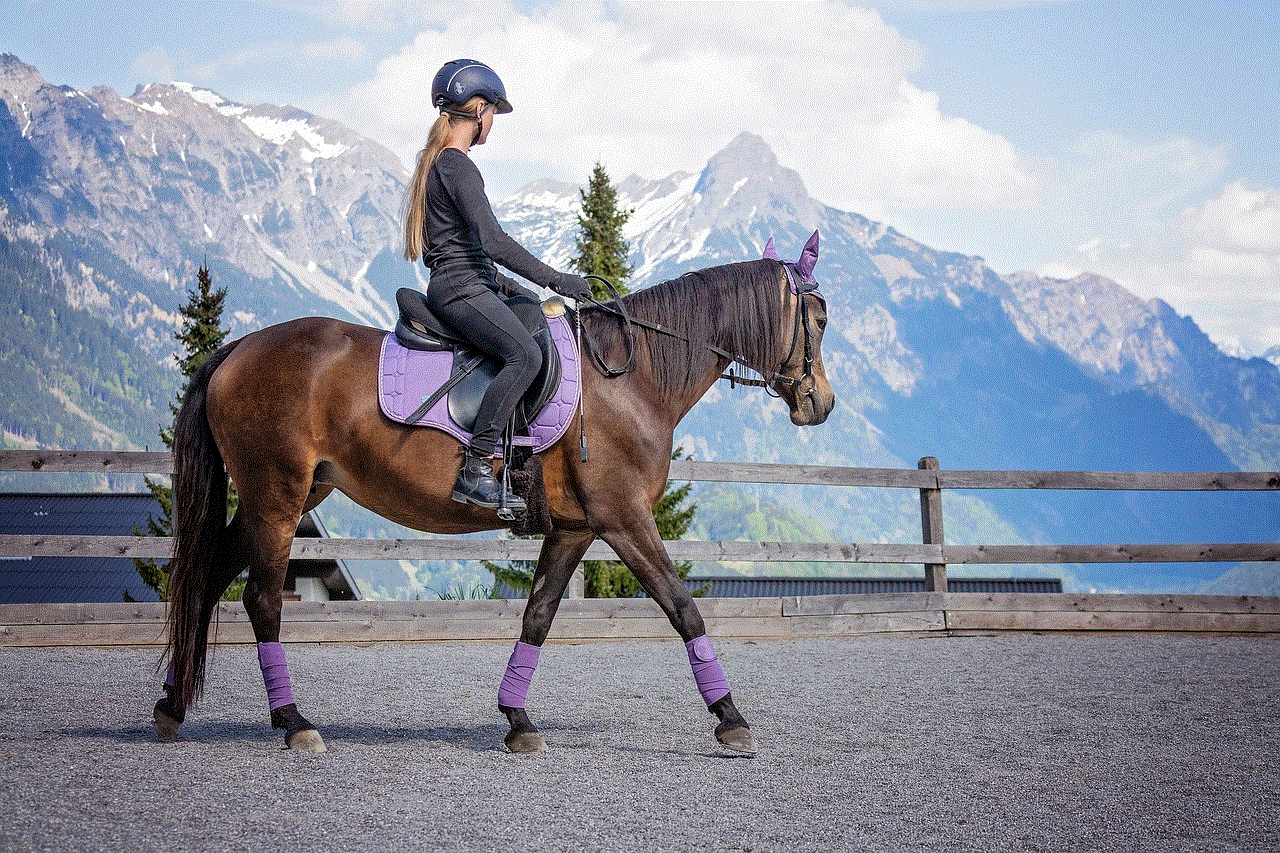location iphone 6 plus
The iPhone 6 Plus, released back in 2014, was one of the most highly anticipated smartphones of its time. With its larger screen size and improved features, it quickly became a favorite among Apple enthusiasts and tech-savvy consumers. One of the standout features of the iPhone 6 Plus was its advanced location capabilities, which allowed users to easily navigate and find their way around. In this article, we will explore the location capabilities of the iPhone 6 Plus in detail, discussing its GPS functionality, mapping services, and other location-based features.
GPS, or Global Positioning System, is a technology that allows devices to determine their precise location on Earth using a network of satellites. The iPhone 6 Plus was equipped with a highly accurate GPS receiver, enabling it to provide users with real-time location information. Whether you needed directions to a new restaurant, wanted to track your outdoor activities, or simply wanted to know your exact location, the iPhone 6 Plus had you covered.
One of the most popular applications that made use of the iPhone 6 Plus’s GPS capabilities was Apple Maps. This native mapping service, developed by Apple, provided users with detailed maps, turn-by-turn directions, and real-time traffic updates. With the iPhone 6 Plus’s larger screen size, the maps were even more immersive and easier to read, making it a breeze to navigate through unfamiliar territories.
In addition to Apple Maps, users also had the option to download and use other third-party mapping applications from the App Store. Popular apps like Google Maps, Waze, and HERE WeGo were available for download, offering users alternative options for navigation and location-based services. This flexibility allowed users to choose the mapping service that best suited their needs and preferences.
Apart from mapping services, the iPhone 6 Plus also offered a range of other location-based features. One such feature was geotagging, which allowed users to attach location information to their photos. This meant that when you took a picture with your iPhone 6 Plus, it would automatically record the location where the photo was taken. This feature was particularly useful for organizing and categorizing photos, as well as for sharing travel experiences with friends and family.
Another notable location-based feature of the iPhone 6 Plus was its ability to track and monitor fitness activities. With the built-in Health app and motion coprocessor, users could easily track their steps, distance traveled, calories burned, and even monitor their heart rate. The iPhone 6 Plus’s location capabilities played a crucial role in accurately recording outdoor activities like running, cycling, and hiking, providing users with detailed insights into their fitness progress.
Furthermore, the iPhone 6 Plus’s location services extended beyond just navigation and fitness tracking. It also allowed users to find nearby points of interest, such as restaurants, hotels, gas stations, and more. Whether you were looking for a place to eat, a hotel to stay in, or a gas station to refuel, the iPhone 6 Plus could quickly provide you with a list of nearby options, complete with ratings, reviews, and contact information.
The iPhone 6 Plus also introduced a feature called “Find My iPhone,” which utilized its location capabilities to help users locate their lost or stolen devices. By accessing the iCloud website or using the Find My iPhone app on another Apple device, users could track the location of their iPhone 6 Plus, play a sound to locate it if it was nearby, lock the device remotely, or even erase its data to prevent unauthorized access.
Another noteworthy location-related aspect of the iPhone 6 Plus was its integration with location-based services like Uber, Lyft, and Airbnb. Users could easily request a ride from a ride-sharing service or find accommodations through Airbnb, all within the comfort of their iPhone 6 Plus. This integration made it incredibly convenient for users to access these services and enhanced their overall experience.
The location capabilities of the iPhone 6 Plus were not without their limitations, however. Like any GPS-enabled device, the accuracy of location information could be affected by various factors, such as tall buildings, tunnels, or poor satellite reception. It was also important for users to ensure that location services were enabled for specific apps to fully utilize their location-based features.
In conclusion, the iPhone 6 Plus was a game-changer when it came to location capabilities in smartphones. Its advanced GPS functionality, coupled with mapping services like Apple Maps and other third-party apps, made it a reliable navigation tool. The ability to geotag photos, track fitness activities, and find nearby points of interest further enhanced the user experience. Additionally, features like Find My iPhone and integration with services like Uber and Airbnb added convenience and security. Although the iPhone 6 Plus had its limitations, it was undoubtedly a significant step forward in the evolution of location-based services on smartphones.
how to make spy camera from mobile phone
In today’s world, technology has advanced to such a level that it has become possible to turn your ordinary mobile phone into a spy camera. With just a few simple steps, you can easily create a covert camera that can capture videos and photos without anyone suspecting a thing. This can come in handy for various situations, such as keeping an eye on your home while you are away, monitoring your children or pets, or even for investigative purposes. In this article, we will guide you through the process of making a spy camera from your mobile phone, and also provide tips on how to use it effectively.
Before we dive into the technical details, it is important to understand the potential ethical and legal implications of using a spy camera. In most countries, it is illegal to record someone without their consent, especially in places where they have a reasonable expectation of privacy, such as in their home or hotel room. Therefore, it is crucial to use a spy camera only for legitimate purposes and with the consent of all parties involved. Any misuse of a spy camera can lead to serious consequences, including legal action.
Now, let’s get into the steps of creating a spy camera from your mobile phone. The first and foremost requirement is a smartphone with a good camera. Most modern smartphones come with high-resolution cameras that can capture clear and detailed footage. However, it is recommended to use a spare phone for this purpose, as you will need to leave the spy camera in a fixed location, and it may not be available for regular use. Once you have selected the phone, the next step is to install the necessary apps and accessories.
The first app you will need is a spy camera app. There are many options available on both the Google Play Store and the Apple App Store, such as Alfred, IP Webcam, and Manything. These apps allow you to remotely access the camera on your phone and view the footage from anywhere in the world. Some of these apps also offer additional features such as motion detection, night vision, and cloud storage for your footage. Choose an app that suits your needs and follow the instructions to install it on your phone.
The next step is to find a suitable location to place your spy camera. It is essential to choose a spot that provides a good view of the area you want to monitor. For example, if you want to keep an eye on your front door, you can place the phone on a shelf facing the door. It is important to ensure that the phone is not easily noticeable and blends in with its surroundings. You can also use a phone holder or mount to keep the phone in place.
Once you have set up the phone, it is time to activate the app and start recording. Most spy camera apps allow you to record videos continuously, or you can set them to record only when motion is detected. This feature comes in handy when you want to save storage space and only capture footage when there is activity in the area. Additionally, some apps also allow you to schedule recording times, which can be useful if you want to monitor a particular time of the day.
Another important aspect to consider is the power source for your spy camera. As the phone will be in use for extended periods, it is crucial to ensure that it remains charged. You can either keep the phone plugged in at all times or use a power bank. Some spy camera apps also have a low-power mode that helps to conserve battery life. It is also recommended to keep the phone connected to a stable Wi-Fi network, as this will ensure that you have uninterrupted access to the footage.
Apart from the camera app, you can also enhance the functionality of your spy camera by using additional accessories. A mini tripod can help to keep the phone steady and prevent any shaky footage. You can also use a small external microphone to improve the audio quality of your recordings. If you want to monitor a larger area, you can connect multiple phones and use them as a network of spy cameras. This can be especially useful for outdoor surveillance, where you may need to cover a wider area.
Now that you have successfully set up your spy camera, it is important to understand how to use it effectively. One of the most critical factors is to ensure that the camera remains undetected. If someone discovers the camera, it can lead to legal consequences, and your purpose of using the spy camera may be defeated. Therefore, it is essential to choose a location that is not easily accessible to others. Additionally, you can also camouflage the phone by placing it inside an ordinary object, such as a tissue box or a book.
It is also important to regularly check the footage and delete any unnecessary recordings to save storage space. You can also set up alerts on the app to notify you when the storage is almost full. It is also recommended to password protect the app, so only you have access to the footage. This can prevent unauthorized access and protect your privacy.
In conclusion, the advancement of technology has made it possible to turn your mobile phone into a spy camera. With the right app and accessories, you can easily create a covert camera that can capture high-quality footage. However, it is important to use a spy camera ethically and legally. Always seek consent from all parties involved and use it only for legitimate purposes. With proper precautions and responsible use, a spy camera from your mobile phone can be a useful tool for surveillance and monitoring.
how to allow snapchat access to photos
Snapchat is a popular social media platform that allows users to share photos, videos, and messages with their friends. One of the features of Snapchat is the ability to access and use photos from a user’s device. However, some users may encounter issues when trying to allow Snapchat access to their photos. In this article, we will discuss the steps to allow Snapchat access to photos and provide tips to troubleshoot any problems that may arise.
Step 1: Check Snapchat permissions on Your Device
Before allowing Snapchat access to your photos, it is important to check the app’s permissions on your device. Permissions control what information and features an app can access on your device. To check Snapchat’s permissions, follow these steps:
1. On an Android device, open Settings and navigate to Apps & notifications. On an iPhone, go to Settings and tap on Privacy.
2. Look for Snapchat in the list of apps and tap on it.
3. Select Permissions (on Android ) or Photos (on iPhone).
4. Make sure the toggle next to Photos is turned on.
If the toggle is turned off, Snapchat will not have access to your photos. Turning on the toggle will allow Snapchat to access your photos.
Step 2: Allow Snapchat Access to Your Photos
If you have recently updated your device or Snapchat, the app may prompt you to allow access to your photos. Follow the steps below to allow Snapchat access to your photos:
1. When prompted by Snapchat, tap on Allow or OK.
2. If you accidentally tapped on Don’t Allow, you can change the permission by following the steps in the previous section.
Step 3: Check Snapchat Camera and Storage Permissions
Apart from Photos, Snapchat also requires access to your Camera and Storage to function properly. If you are experiencing issues with Snapchat, make sure the app has the necessary permissions. Here’s how to check the permissions:
1. Open Snapchat and tap on your profile icon.
2. Tap on the Settings icon (gear icon) in the top right corner.
3. Under Who Can…, tap on Permissions.
4. Make sure the toggle next to Camera and Storage is turned on.
Step 4: Enable Camera and Photos in Snapchat Settings



In addition to your device’s permissions, Snapchat also has its own settings that control access to your Camera and Photos. To enable these settings, follow the steps below:
1. Open Snapchat and tap on your profile icon.
2. Tap on the Settings icon (gear icon) in the top right corner.
3. Scroll down and tap on Permissions.
4. Make sure the toggle next to Camera and Photos is turned on.
Step 5: Update Snapchat to the Latest Version
If you are still having trouble allowing Snapchat access to your photos, make sure you have the latest version of the app. Developers often release updates to fix bugs and improve the app’s performance. To update Snapchat, follow these steps:
On an Android device:
1. Open the Google Play Store.
2. Tap on the three horizontal lines in the top left corner.
3. Select My apps & games.
4. Look for Snapchat in the list of apps and tap on Update.
On an iPhone:
1. Open the App Store.
2. Go to the Updates tab.
3. Look for Snapchat in the list of apps and tap on Update.
Step 6: Clear Snapchat Cache
Snapchat stores temporary data on your device to make the app run faster. However, this data can sometimes cause issues with the app. To fix this, you can clear the cache and data for Snapchat. Here’s how to do it:
On an Android device:
1. Go to Settings and tap on Apps & notifications.
2. Look for Snapchat and tap on it.
3. Tap on Storage.
4. Tap on Clear cache and Clear data.
On an iPhone:
1. Go to Settings and tap on General.
2. Tap on iPhone Storage.
3. Look for Snapchat and tap on it.
4. Scroll down and tap on Offload App.
Step 7: Restart Your Device



Sometimes, restarting your device can fix issues with apps. It clears the device’s memory and can help resolve any temporary glitches. To restart your device, follow these steps:
On an Android device:
1. Press and hold the power button.
2. Tap on Restart.
On an iPhone:
1. Press and hold the power button and either of the volume buttons.
2. Swipe to power off.
Step 8: Uninstall and Reinstall Snapchat
If all else fails, you can try uninstalling and reinstalling Snapchat. This will delete the app and all its data from your device. To uninstall Snapchat, follow these steps:
On an Android device:
1. Go to Settings and tap on Apps & notifications.
2. Look for Snapchat and tap on it.
3. Tap on Uninstall.
On an iPhone:
1. Press and hold the Snapchat app icon until it starts shaking.
2. Tap on the x in the top left corner of the app icon.
3. Tap on Delete.
To reinstall Snapchat, go to the App Store or Google Play Store and download the app again.
Troubleshooting Tips
If you are still experiencing issues with allowing Snapchat access to your photos, here are some troubleshooting tips that may help:
1. Check if your device is compatible with the latest version of Snapchat.
2. Make sure your device has enough storage space.
3. Check if your device’s operating system is up to date.
4. If you are using a third-party camera app, try uninstalling it and using the default camera app.
5. If you are using a custom ROM, try reverting to the stock ROM and see if the issue persists.
6. Check if your device has a secure lock screen . If it does, you may need to enter your passcode or scan your fingerprint to allow Snapchat access to your photos.
Conclusion



Snapchat is a fun and entertaining app that allows users to share photos and videos with their friends. Allowing Snapchat access to your photos is a simple process, but it may encounter issues due to device permissions or app settings. By following the steps outlined in this article, you can ensure that Snapchat has the necessary access to your photos. If you are still experiencing issues, try the troubleshooting tips provided to resolve the problem. With the right permissions and settings, you can fully enjoy all the features and functions of Snapchat.
0 Comments